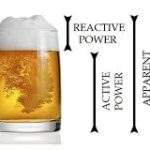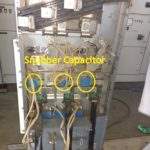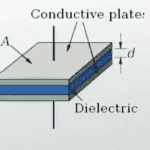Tag: Electrical Basic
Significance of Leakage Reactance of Transformer
Transformer Leakage Reactance:
In an electrical machine such as alternator, transformer, motor etc, the inductance is a responsible for creating flux in the machine. In...
What is Balance Load & Unbalance Load EEE Student
Balance Load & Unbalance load.
The load in a poly phase circuit can be classified into two categories are
Balanced load
Unbalance load
Balance circuit:
The circuit...
IP Enclosure Ratings & Standards Electrical Equipments
IP Enclosure Ratings & Standards Electrical Equipment
IP rating is also known as Ingress Protection or International Protection ratings which are defined to the international standard...
Symmetrical Faults & Unsymmetrical Faults
What is Symmetrical Faults and Unsymmetrical Faults
During Normal condition, In AC (Alternating Current) power system operates under balanced load conditions. The unbalance condition generally...
Why Tertiary Winding is used in transformer?
Why tertiary winding are used in transformer?
In two winding transformer both primary and secondary is having the same kVA rating. Both windings are independent...
Why PT and CT Terminals are Star Connected
Why PT and CT Terminals are Star Connected
In Alternating Current power system two most important instrument transformers are frequently used, one is current transformer...
What is Ground Fault and Earth Fault
What is Ground Fault and Earth fault:
Ground fault:
Ground Fault is nothing but a fault or contact occurs between the Live conductor to ground/neutral point....
What is Reactive Power
Reactive Power:
Reactive power is an imaginary power which is delivered by capacitors and alternators. Consider the case in which the load is a pure...
Single Phase System vs Three phase System
Single Phase System vs Three phase System:
There is two kind of power supply is normally implemented one is single phase and another one is...
What is Delta connection in Three Phase Power System
What is Delta connection?
Delta connection is an arrangement of three of same or different passive components. It is also called a mesh connection. The...
What is Star Connection in Three Phase Power System
What is Star Connection:
Star connection or Y connection is an arrangement of three of same or different passive components (resistor, inductor, capacitor). This arrangement...
What is Motor? How Motor Works With Graphical Presentation
Motor:
Motor is a device which convert electrical energy into mechanical energy. This mechanical energy then can be supplied to various types of loads such...
Potential Transformer Working Principle
Potential Transformer:
Potential transformer is nothing but a step down transformer whose secondary winding has less number of turns as compared with primary.
Secondary winding turns...
How VFD Saves Power & Basic Concept of VFD
How VFD Saves Power & Basic Concept of VFD:
VFD is nothing but a variable frequency drive, sometime it is called as VVFD (Variable Voltage...
What is Transformer, Working, Basic, Application
What is Transformer:
A transformer is essentially a static electromagnetic device consisting of two or more windings that link with a common magnetic field.
A transformer...
What is Impedance Reactance Impedance Triangle
Impedance:
The total opposition to an alternating current circuit is called impedance. The opposition is created by resistor, inductor, and capacitor.
Impedance is symbolized by “Z”....
What is Power Factor & Power Triangle
Power Factor:
Power Factor is defined as the cosine of an angle between the current and voltage. Otherwise, the ratio between the real power to...
Why Capacitors Use As High Voltage Protection
Why Capacitors use as High Voltage protection:
The voltage across the capacitor cannot change instantaneously. This property is used in high voltage protection in electronics...
What is Capacitance, Capacitor Series and Parallel Connection
Capacitance:
The measured value of capacitor is called capacitance. The exact definition is the ability of a capacitor to store electric charge is measured. It...
Faraday’s Law Electromagnetic Induction
Faraday’s law Electromagnetic induction:
Electromagnetic induction was discovered independently by Michael Faraday in 1831 and Joseph Henry in 1832. Faraday was the first to publish...

















